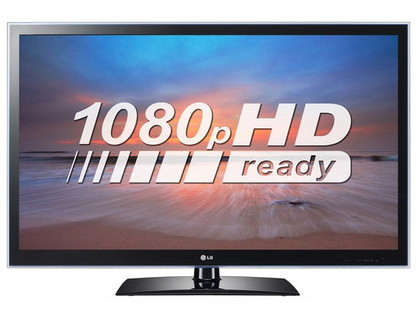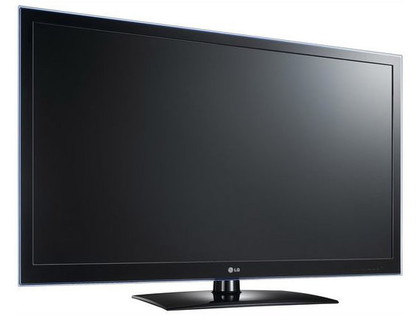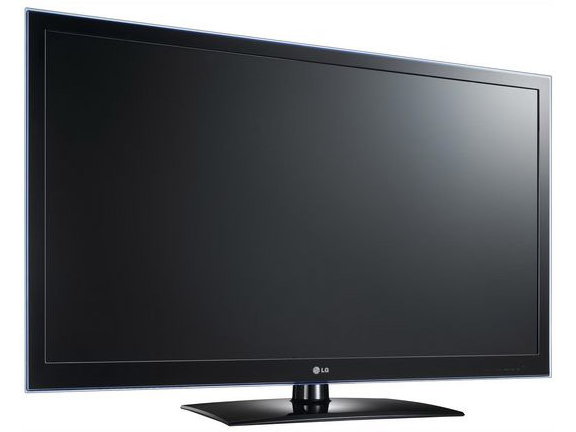Why you can trust TechRadar

Given its relatively low feature count, the LG 42LV450U really needs to nail the picture quality section of this review if it's to follow through on its on-paper bargain potential.
Unfortunately, though, while it tries hard in some ways, its picture quality doesn't ultimately stand out from the budget hordes as much as it needs to.
The TV is at its best, predictably, when showing bright high-definition sources; especially animated stuff such as the Blu-rays of Toy Story 3 and Rango. With this sort of material, the customary rich colours and high brightness associated with edge LED technology are able to shine – literally.
Given that many cheap flatscreen TVs tend to carry slightly wan colours and muted brightness levels, this edge-LED fuelled dynamism will likely win the set quite a few fans among people perusing the crowded shelves of their local high street electrical store.
It also makes the TV a potentially winning option for rooms that tend to be quite bright. However, the dynamism and brightness also seem to be hiding weaknesses elsewhere – more on this in a minute.
First, though, there's another surprising strength of the LG 42LV450U's pictures to report: their sharpness, at least when showing HD pictures.
Fine detail levels are high, edges are crisp without using the optional edge enhancement system (this tends to over-stress edges, in fact) and motion reproduction is pretty solid by budget TV standards.
There is certainly some loss of resolution over moving objects, but it's not bad at all, and doesn't tend to get so severe that the picture becomes overtly smeary.
You can reduce this slight resolution loss via the HD TV's TruMotion processing option. However, be prepared to pay a price for this in the shape of processing-related side effects such as smudging around the edges of moving objects, and the appearance of what look like 'skipped frames' if the action is particularly fast paced.

Because of these sorts of issues, you're probably best to leave the TruMotion system off for most of the time. These things boil down to personal taste, though, so don't be afraid to try the processing out for yourself. LG has provided the facility to fine-tune TruMotion's activities by manually adjusting the relative 'power' of its separate judder and blur components.
While the LG 42LV450U's strengths initially make it an engaging TV to watch, if you look a little deeper you start to see some problems behind the surface gloss. The biggest of these by far concerns the set's black level depth.
Using the TV's default presets, dark scenes tend to look greyed over and, as a result, rather flat and hollow.
You can get a more convincing black colour if you really crank down the set's brightness and backlight settings. But by the time you've taken so much brightness out of the picture that blacks look black, shadow detail has been crushed into oblivion, and the rest of the picture has become too dull for use in all but the darkest of environments.
There is a little good news concerning the LG 42LV450U's dark scene reproduction, though, in that the backlighting seems pretty even across the whole screen; there aren't the pools of extra brightness towards the screen's edges that characterise an unfortunate number of edge LED TVs.
The TV doesn't have local dimming, either, which is actually a good thing, since it means you don't get the blocks of light inconsistency around bright objects that you can get with locally dimmed edge LED models.
Another area where the LG 42LV450U's low price can be seen in its picture performance is its standard definition playback. The 42-inch TV's upscaling doesn't do a particularly good job of either suppressing noise in low quality standard definition sources or adding sharpness, especially as there's a slight increase in the amount of resolution lost over motion.
This all makes the TV's lack of Freeview HD tuner feel all the more painful, of course.
One last negative of the pictures finds the TV screen's contrast reducing quite dramatically if you have to watch it from any significant viewing angle. But to be fair, this is true of almost every other LCD TV, too.
John has been writing about home entertainment technology for more than two decades - an especially impressive feat considering he still claims to only be 35 years old (yeah, right). In that time he’s reviewed hundreds if not thousands of TVs, projectors and speakers, and spent frankly far too long sitting by himself in a dark room.

